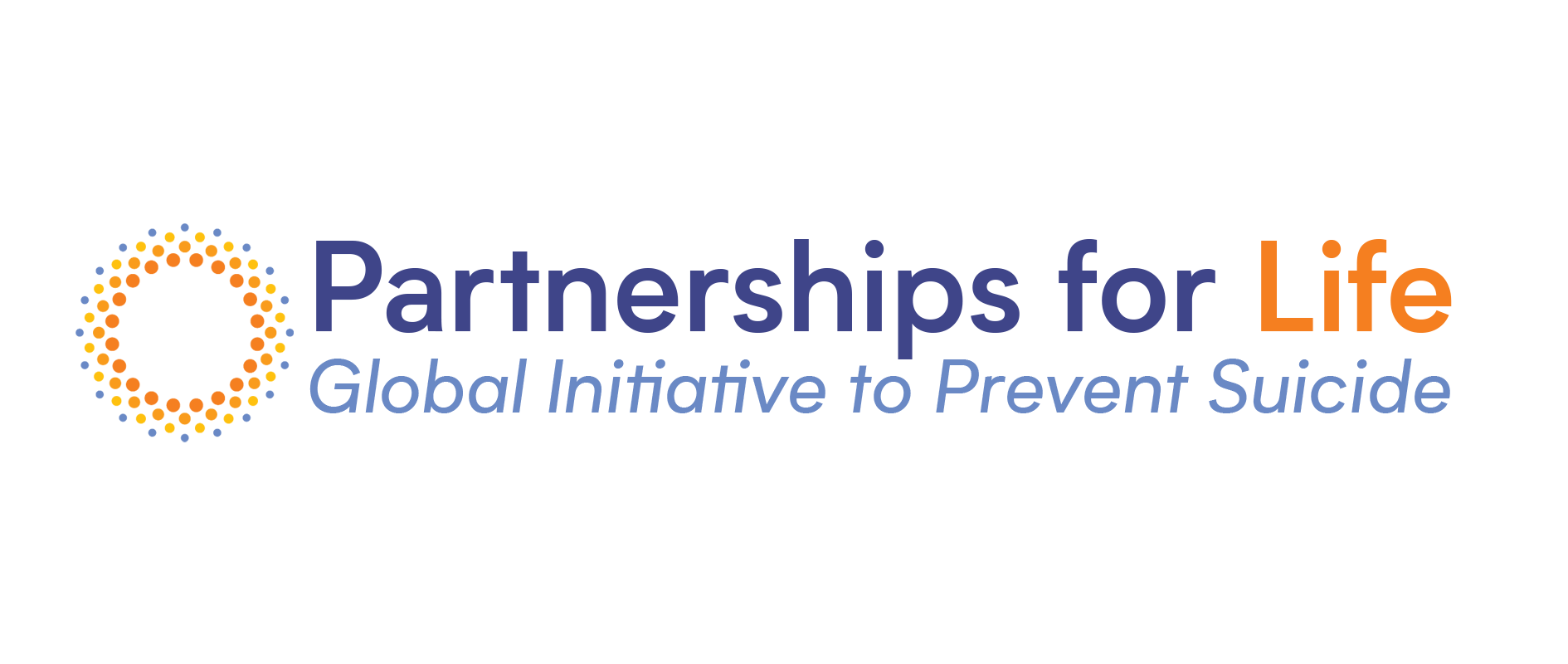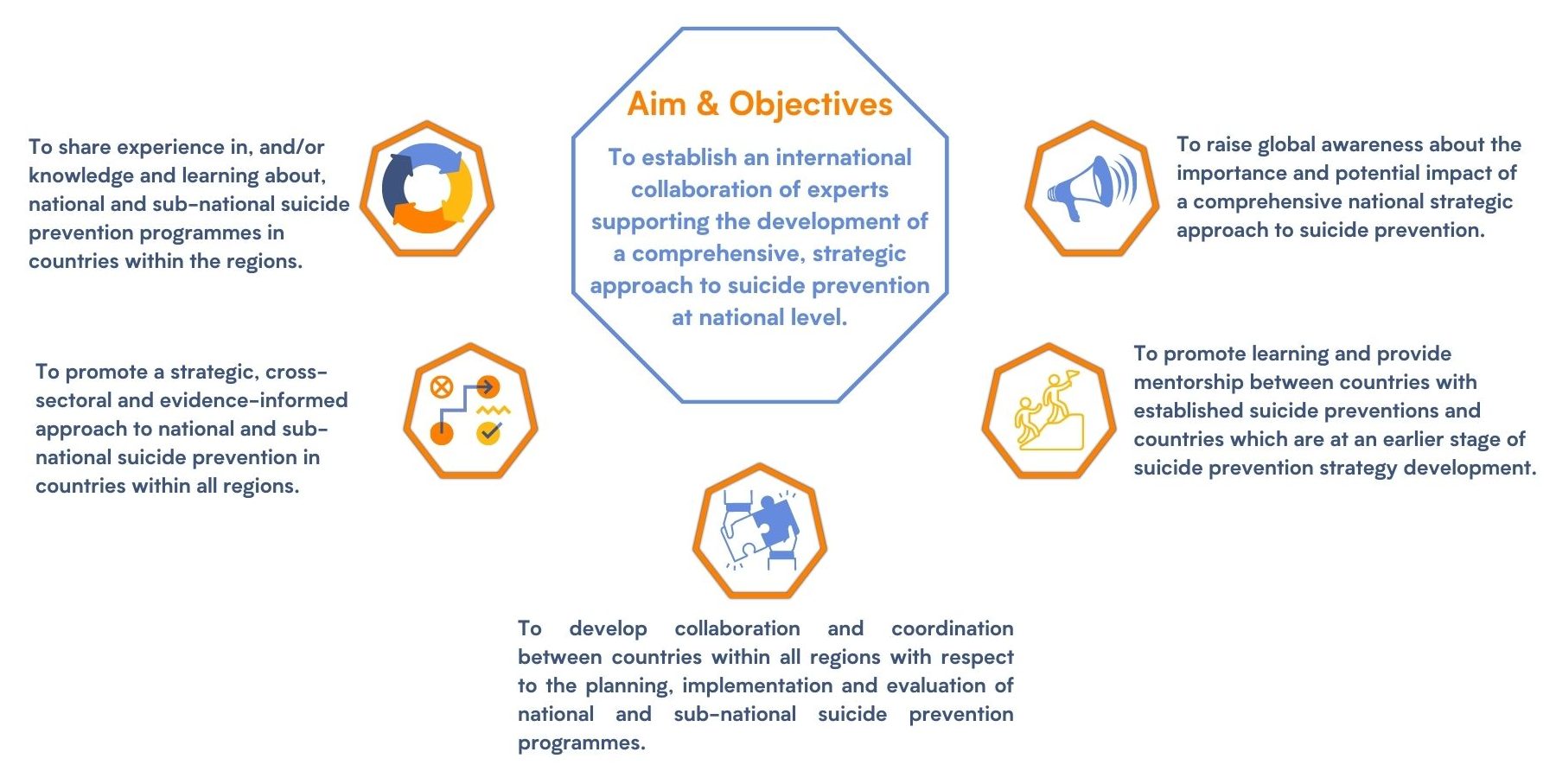Report of the Partnerships for Life Pre-Conference Workshop at ESSSB20
In August, IASP organised a Partnerships for Life Pre-Conference Workshop at the 20th European Symposium on Suicide & Suicidal Behaviour in Rome.


The development of National Suicide Prevention Strategies have been identified as a proven systematic, evidence based response to preventing suicide that combines both community based approaches and government policy. To date, an estimated 40 countries are known to have developed a national suicide prevention strategy, and in many other countries there are regional programmes or less comprehensive suicide prevention projects and activities.
Partnerships for Life networks are active in each of the six WHO regions, identifying contacts in over 60% of countries, in the context of a global five-year programme that takes into account the stage of suicide prevention strategy development in each country. The initiative is led by a steering group chaired by Professor Stephen Platt.


In September 2023, the IASP Membership ratified a Policy Position recommending that every country should adopt, or make progress towards the adoption of a national suicide prevention strategy aimed at reducing rates of suicidal behaviour.
The Background Document outlines the relevant research literature that underpins this policy position and highlights gaps in the evidence base relating to national suicide prevention strategies.
Join Professor Rory O’Connor and guests Professor Steve Platt, Dr Mark Sinyor and Wendy Orchard, as they discuss the Partnerships for Life initiative. Discussions of suicide can be overwhelming; if you are struggling and would like to seek further support, we encourage you to visit Find A Helpline, where you can connect to helpline support near you.
In August, IASP organised a Partnerships for Life Pre-Conference Workshop at the 20th European Symposium on Suicide & Suicidal Behaviour in Rome.
The paper is titled “Key Priorities, Challenges, Strengths, and Opportunities for Suicide Prevention in Southeast Asia”
In June 2024, at the International Association for Suicide Prevention’s 11th Asia Pacific Conference in Bangkok, Partnerships for Life held a pre-conference workshop with three key objectives.
In February 2024, Partnerships for Life held its first South East Asian training workshop. The two-day workshop was led by regional co-coordinators, Dr Anish Cherian and Professor Vikas Menon.
In total, there are 37 countries in the Western Pacific Region and it is home to around 1.9 billion people. The area contains a diversity of cultures and languages and stretches from Mongolia in the north through to New Zealand in the far south. There are significant socio-economic divides of inequalities and widening disparities.
Over 700 000 people lose their life to suicide every year – 200,000 of these occur in the Western Pacific Region, accounting for around 25% of all suicides worldwide. Over 75% of all suicides in the region occur in low- and middle-income countries. Reducing the global suicide mortality rate by one third by 2030 is both a target and indicator in the United Nations Sustainable Development Goals and in WHO’s Mental Health Action Plan 2013-2030.
For practical reasons the UN Western Pacific Region was divide, by IASP, into 2 sub regions working close together to cover the enormity of the task within this global project:
Western Pacific Region 1 (WPR1)
This sub region covers the northern western pacific basin focuses on 11 member states, 1 non UN state, plus 2 China Special Administrative Regions (Brunei Darussalam Cambodia China Japan Korea S Laos Malaysia Mongolia Philippines Singapore Vietnam Taiwan CH Hong Kong SAR CH Macao SAR). In these countries and regions, three have developed a strategic suicide prevention plan (Republic of Korea, Japan and Malaysia) whereas the Philippines has its suicide plans integrated in to the Mental Health Plan. To be noted is that many of the neighbouring countries maintain a variety of suicide prevention activities (Hong Kong, Japan, Malaysia, Philippines, Singapore and Taiwan.
Western Pacific Region 2 (WPR2)
This sub region consists a significant number of South Pacific Islands (185) as well as significant high income countries of Australia and New Zealand.
Australia, Cook Islands, Fiji, Marshall Islands, Micronesia, Nauru, New Zealand, Niue, Palau, Papua New Guinea, Samoa, Solomon Islands, Tonga, Tuvalu, Vanuatu, Protectorates: Fr Polynesia, Guam, New Caledonia , Northern Mariana Islands , Pitcairn Island , Tokelau, Wallis and Futuna
To establish a cross-regional collaboration of experts supporting a comprehensive, strategic approach to suicide prevention in each nation in the Western Pacific Region.
Professor Paul Yip (WPR1) and Dr Greg Armstrong (WPR2)
The region consists 21 UN member states (Afghanistan, Bahrain, Djibouti, Egypt, Iran, Iraq, Jordan, Kuwait, Lebanon, Libya, Morocco, Oman, Pakistan, Saudi Arabia, Somalia, Sudan, Syrian Arab Republic, Tunisia, United Arab Emirates and Yemen) and the occupied Palestinian territory with a population of 745 million people.
Within the region there is a similarity of background and a multitude of languages. It is primarily a Muslim region and has the potential within this programme of reaching out and including non EMR nations from South East Asia. However, the region is diverse both in terms of socioeconomic circumstances, health systems and encounters significant conflict, unrest and humanitarian crises which accounts for the huge numbers of displaced persons (25 million) and refugees (32.1 million).
At the commencement of the programme, one third of this region responded immediately to the scheme: Afghanistan, Iran, Jordan, Kuwait, Pakistan, Palestine and Tunisia.
To establish a cross-regional collaboration of experts supporting a comprehensive, strategic approach to suicide prevention in each nation in the Eastern Mediterranean Region.
The region consists 11 UN member states, of which four have developed a strategic suicide prevention plan: Bhutan, India, Sri Lanka and Thailand. The geographical spread covers approximately 4.6 million kilometres with a population of two billion conversing in approximately 1000 languages. Within the 11 nations that make up this region, Bangladesh, Bhutan, India, Indonesia, Maldives, Myanmar, Nepal, Republic of North Korea, Sri Lanka, Thailand, Timor Leste, there is a multitude of languages, different religious beliefs and diverse cultural influences.
To establish a cross-regional collaboration of experts supporting a comprehensive, strategic approach to suicide prevention in each nation in the South-East Asia Region.
The region consists 35 countries throughout the 2 continents including the Central American region between them, spanning the northern and southern hemispheres. The Americas have a population of almost a billion people with major languages being English, Spanish, Portuguese, French and Dutch. Within the nations that make up this region there is a huge diversity of cultures and range of high, middle and low income countries.
Antigua and Barbuda, Argentina, Bahamas, Barbados, Belize, Bolivia, Brazil, Canada, Chile, Colombia, Costa Rica, Cuba, Dominica, Dominican Republic, Ecuador, El Salvador, Grenada, Guatemala, Guyana, Haiti, Honduras, Jamaica, Mexico, Nicaragua, Panama, Paraguay, Peru, Saint Lucia, St. Vincent and the Grenadines, St. Kitts and Nevis, Suriname, Trinidad and Tobago, United States of America, Uruguay, Venezuela
Across the Americas, on average, 98,000 yearly suicide deaths were reported from 2015 to 2019, with the suicide rate in North America and the non-Hispanic Caribbean higher than the regional rate. About 79% of suicides in the region occur in males. The age-adjusted suicide rate among males is more than three times higher than in females. Suicide is the third-highest leading cause of death among young people aged 20 to 24 in the Americas. It is noted that the data from this huge and diverse region is neither consistent or reliable from all countries especially in the more socio economic challenged areas.
The leadership has been selected from North America (Canada) providing the widest potential support and mental health inter-continental connections in order to strengthen a working and viable collaboration.
To establish a cross-regional collaboration of experts supporting a comprehensive, strategic approach to suicide prevention in each nation in the Americas.
Read the report in English or in Spanish
Read the report in English or in Spanish
The region consists 53 countries (51 UN member states), of which 17 have developed a strategic suicide prevention plan. Europe covers about 10.18 million km2 with a population of 900 million. The area contains a diversity of cultures and languages and stretches from Greenland in the northwest to Russia in the east and Turkey in the south. There are significant socio-economic divides of inequalities and widening disparities
Most common first languages are Russian, German, French, Italian, English, Spanish, Polish, Ukrainian, Romanian, Dutch, Serbo – Croatian and Turkish
This regional project is led out of Vienna and crosses many boundaries from the high income countries in the west and members of the EU through to the low and middle income countries in the east and currently experiencing a raging military crisis between two nations adding to a catastrophe of increase in displaced persons and refugees.
To establish a cross-regional collaboration of experts supporting a comprehensive, strategic approach to suicide prevention in each nation in the European Region.
Professor Thomas Niederkrotenthaler
The WHO lists 47 countries with an approximate population of 1.4 billion people with the major languages being English, French Spanish, Portuguese, Swahili and Arabic followed by a further 1200 – 3000 native languages:
Algeria, Angola, Benin, Botswana, Burkina Faso, Burundi, Cabo Verde, Cameroon, Central African Republic, Chad, Comoros, Congo, Côte d’Ivoire, DR Congo, Equatorial Guinea, Eritrea, Eswatini, Ethiopia, Gabon, Gambia, Ghana, Guinea, Guinea-Bissau, Kenya, Lesotho, Liberia, Madagascar, Malawi, Mali, Mauritania, Mauritius, Mozambique, Namibia, Niger, Nigeria, Rwanda, Sao Tome & Principe, Senegal, Seychelles, Sierra Leone, South Africa, South Sudan, Tanzania, Togo, Uganda, Zambia, Zimbabwe.
This region consists of low and middle income countries and has the extra challenge that access to health and mental health services is limited and therefore the challenges of raising awareness of suicidal behaviour and its prevention requires much attention and support from colleagues in the field. Africa is the world’s second most populous continent with a suicide rate of 11.2 per 100 000.
Currently the African region has two countries that have formulated a national strategy, Kenya and Namibia. The countries of Ghana and Uganda have maintained a strong collaborative relationship with the Norwegian university over some years and recently the Ghana Association for Suicide Prevention was launched (Oct 2022) and attended by the IASP leadership from this global programme.
To establish a cross-regional collaboration of experts supporting a comprehensive, strategic approach to suicide prevention in each nation in Africa


